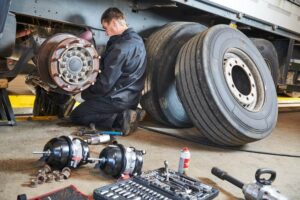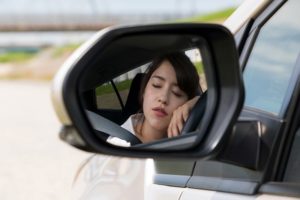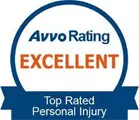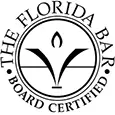Planning a Safe Road Trip
How to Plan a Safe Road Trip in 2023
The rising travel costs have families considering more creative ways to get more bang for the buck on their trips. Some people opt for road trips because they are affordable and a great way for families to spend time together.
There is nothing quite like an adventure on the open road, and the Pacific Northwest is one of the best regions in the country to tour. Families enjoy the national parks and numerous natural sights in the area. They depend on their car to get them to and from their destination safely. Read on to learn more about road safety and accident prevention tips you can employ from our Tampa car accident lawyers.
Plan for a Safe and Enjoyable Time
Road trips can be fun in any season, especially during the summer and warmer weather. To maximize your safety and that of your family, you should plan ahead of time. Successful road trips take some forethought. You never know when something can happen when you are on the road.
What you do in advance can minimize the chances that something goes wrong and help you be ready if it does. It always helps to do everything possible to put yourself in the best position possible to have a safe and enjoyable road trip. Here are some tips to help you plan the safest road trip for you and your family.
Make Sure Your Car Is in Proper Working Order
 Before starting your road trip, you should perform all necessary preventative maintenance on your car. The last thing you want is for your car to break down or fail when you are far from home. You also do not want maintenance issues that can put you and your family in danger when driving, such as brake failure or tire blowouts.
Before starting your road trip, you should perform all necessary preventative maintenance on your car. The last thing you want is for your car to break down or fail when you are far from home. You also do not want maintenance issues that can put you and your family in danger when driving, such as brake failure or tire blowouts.
If your car has scheduled maintenance, complete it before you begin your journey. You should also make a visual inspection of your car and your fluid levels before you leave. Do not put off any maintenance needs when you come back home because a long trip can stress your car.
Ensure that your oil is changed and you have checked the pressure in your tires. Leave with a full gas tank (or electric charge), so you have less to worry about when on the road. If you are traveling in the summer, check your air conditioner before you leave because of the risk of heatstroke.
It does not take much time or investment to ensure your car is roadworthy before you leave for your road trip. You will regret not making these efforts if something goes wrong when you are on the road.
Plan Your Route Ahead of Time
You should plan your route before you leave for your trip. While driving, you should focus on the road instead of worrying about where you are going. The best thing to do is to plug your destination into a mobile app and study it before you leave. This way, you are not taken by surprise by any turns.
Apps like Waze are helpful because they warn you of hazards on the road before you encounter them. Make sure that you have Waze downloaded onto your phone or car driving app so the directions and warnings can be verbally spoken to you by your car through Bluetooth connection. You should not have your phone in your hand to look at directions because it takes your eyes off the road. Scanning directions on your mobile device counts as distracted driving, which is illegal and dangerous.
Have a Current Car Insurance Card and Your Registration Handy
You should also ensure that your car insurance policy is current and have a copy of your insurance card handy. The last thing you want is to be involved in an accident away from home without the necessary coverage. If you do not have a current car insurance card available, you can receive a citation for driving without proof of insurance. While you might have the necessary car insurance, the legal requirement is to carry proof of insurance.
Make Sure You Have Emergency Supplies
Drivers should also carry supplies and be ready if something goes wrong with their car. Most car insurance companies provide roadside assistance; you should have those numbers handy in case you need them. Your phone should have a full charge when you are driving in case you need it in an emergency.
In addition, carry with you:
- A car charger or a USB car adapter
- Flashlight
- Jumper cables
- A tire jack and inflator
- A physical map or an offline Google map in case you are not in a coverage area
- Bottled water
- A pen and paper (in case you are in an accident and need to take down someone’s insurance information
Have a Plan to Stay Rested and Alert

You should plan to be as safe and alert as possible while driving. Every driver should have a plan that does not rely on much late-night travel. After an entire day of driving or activities, your driving will likely suffer when you are drowsy. Many people do not realize that drowsy driving is every bit as dangerous as drunk driving.
If you are behind the wheel after not having slept for 20 hours, it is functionally the same as driving with a blood alcohol content of 0.08. Your car can travel the distance of a football field on the highway in just a few seconds, where you have nodded off and lost focus.
Therefore, your driving plan should include adequate sleep and time for breaks. Not only will breaks keep you refreshed, but they are also a time to catch up on texts and emails, so you are not driving distracted. If possible, you should make hotel reservations ahead of time instead of driving until you can no longer stay awake.
Planning reduces the chances that you will try to do too much and end up dozing behind the wheel. If you are driving alone, you should be even more cautious because you have nobody to speak with to help keep you awake.
Take Plenty of Breaks When You Are Driving
Breaks should also include time for meals. Eating on the go is just as dangerous as being on your cell phone while driving. Having food in your hands, even if it is not illegal, takes at least one hand off the wheel and your eyes off the road.
Drivers are as worried about not getting ketchup on their lap as they are about staying in their lane. Plan your eating stops early, so you can minimize distractions while driving. If you wait too long to eat, you can get distracted because you are hungry.
Experts recommend taking a break from driving every two hours on a long road trip. Not only does it help you stay alert, but it can also reduce any risks to your circulation from sitting in the same place for an extended period.
Know the Laws Where You Go
You will need to know the laws in the states where you plan to travel. There may be special laws on the books, and it is your responsibility to understand them before you drive. For example, different states have varying laws that impose various restrictions on cell phone use. Other states may require you to change lanes if there is a law enforcement officer on the shoulder. It is up to you to know state laws, and you can still receive tickets even if you are an out-of-state resident. In fact, anecdotal reports are that law enforcement likes to ticket out-of-state drivers because they will not return to the state to challenge the tickets.
If you have been in an accident, you may face difficulty getting your vehicle back home. You may consider repairing your vehicle locally and finding another way back home. Otherwise, you may consider having your vehicle towed back home for repair, although it can be very expensive. Before you entrust your vehicle to a repair shop, you should do extensive research on its reliability and trustworthiness.
Always Hire a Lawyer When You Have Been in an Accident Away from Home
If you have suffered an injury outside of the state, you will need to hire an attorney who is licensed to practice law in the jurisdiction where you suffered an injury. To file a lawsuit in a certain state, the court will need to have personal jurisdiction over the defendant.
However, you can file the case in federal court in Washington if the amount in controversy exceeds $75,000. If there is diversity jurisdiction, meaning the parties are citizens of two different states, and the case is worth more than $75,000, you can always file your lawsuit in federal court.
If you or a family member has suffered an injury in an accident on your road trip, you may be entitled to substantial financial compensation if you can prove that someone else was responsible for the accident.
You cannot easily investigate and file a claim if you have suffered an injury away from home. Therefore, you should hire an attorney who can do the necessary work to investigate the accident and gather the evidence that can prove who was to blame for the accident. There are already enough difficulties when you have been involved in an accident far from home that you should leave the details of the legal process to an experienced attorney.
How a Car Accident Attorney Helps Your Case

Your car accident attorney can help you by:
- Gathering the evidence that can lead to a finding that the other driver was responsible for the crash
- Dealing with the insurance company on your behalf, so you do not run the risk of making a mistake that can come back to haunt you rather quickly
- Estimating the value of your claim by reviewing the specifics of your situation
- Filing the claim on your behalf, taking the time to prepare a researched and detailed claim that can help persuade the insurance company of both your entitlement to damages and your actual damages
- Advising you on your legal options and the most effective way to obtain financial compensation
- Negotiating your settlement with the insurance company, advising you to reject low offers, and putting pressure on the insurance company to pay more when you deserve it
- Answering all your questions about your legal case and keeping you informed of all possible development.
Do Not Take on More Than You Can Handle
It is stressful enough to be in an accident when you know the area. Your anxiety level increases even more when the venue for the case may be many miles away from where you live. The one thing that you do not have to stress about is how you will handle the legal details of your case. Here, the answer is that you do not have to handle them at all. Instead, you work with your car accident lawyer, who will do the hard work on your claim.
You will not even need to pay the lawyer any money upfront, only owing them any money at all if you can win your case. The biggest risk to you is if you decide to go it alone in your legal case. Then, the insurance company will do everything that it can to take advantage of you.
Make sure you receive the medical treatment you need for your accident-related injuries. Keep up with your treatment and focus on recovering physically as much as possible. Leave the legal side of the equation to your personal injury accident attorney. They protect your rights, so you do not have additional stress on your plate.
Free Consultation
We Are Here For You 24/7
Reviews
– Elissa M.
“Really pleased with Boohoff Law! Received immediate responses when I had any questions. Treated amazingly by all staff … made this process a true breeze!”
– Caitlyn M.
– Brandy K.
Related Posts
Lowball Offer for Your Totaled Car? What To Do When Your Car Was Totaled and the Insurance Offer Seems Too Low
Wrecked Without a Buckle: Can I File a Claim if I Wasn’t Wearing a Seatbelt in a Car Accident?
Sidelined by a Sudden Door? Figuring Out Who Is Liable in a Dooring Bicycle Accident
Recovery is personal.
We’re here for you.
We’re close by. And if you can’t make it to us, we’ll meet you where you need us, at home or in the hospital.
You're better off with Boohoff.











The information on this website is for general information purposes only. Nothing on this site should be taken as legal advice for any individual case or situation. This information is not intended to create, and receipt or viewing does not constitute, an attorney-client relationship.
available 24/7
(877) 999-9999
